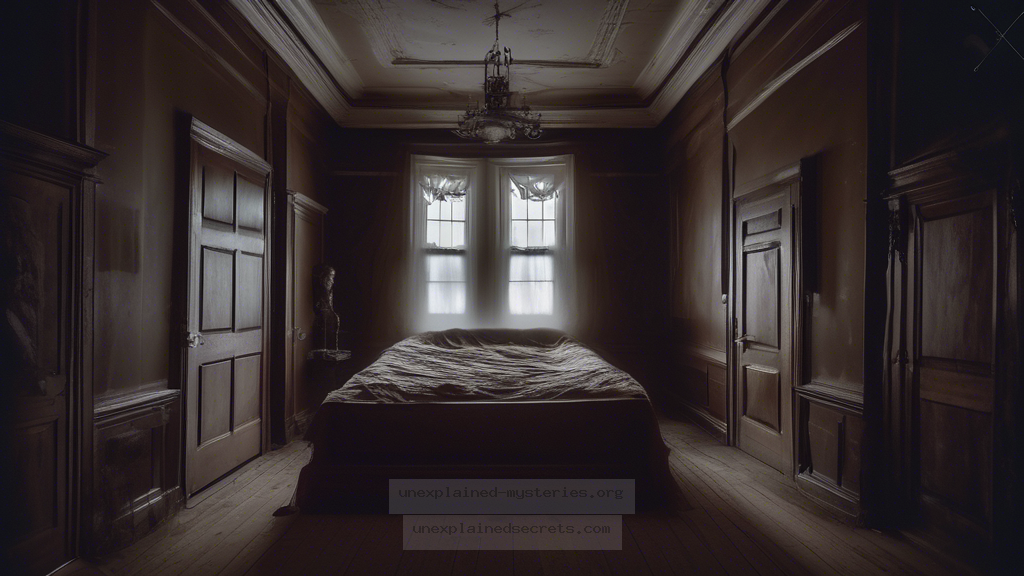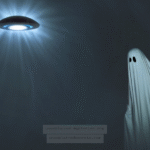What Really Happened at the Brown Lady of Raynham Hall?
What Really Happened at the Brown Lady of Raynham Hall?
The Brown Lady of Raynham Hall is one of the most famous ghost stories in British history, and the mystery surrounding her identity and the events leading to her spectral appearances has captivated paranormal enthusiasts and skeptics alike for decades. Why does this particular haunting continue to intrigue us, and what evidence supports the claims of sightings? In this blog post, we will delve deep into the history, theories, and ongoing debates surrounding the enigmatic Brown Lady, providing insight into why this case remains a cornerstone of paranormal investigation.
Historical Context: The Origins of Raynham Hall
Raynham Hall, located in Norfolk, England, has a rich history dating back to the early 18th century. Built in 1622, the hall has been the residence of the Townshend family for generations. The story of the Brown Lady centers around Lady Dorothy Walpole, who is often believed to be the spirit haunting the estate. Lady Dorothy was the wife of Charles Townshend, but she is thought to have been mistreated and possibly even imprisoned within the hall by her husband. Her tragic life and untimely death in 1726 set the stage for the haunting that would follow.
Key Fact: The term “Brown Lady” is derived from the brown dress she is often seen wearing, which was a fashionable style of the early 18th century.
The First Sighting: A Ghostly Encounter
The first recorded sighting of the Brown Lady occurred in 1835, when a group of guests at Raynham Hall claimed to have seen her apparition descending the staircase. The account was documented by the renowned photographer and ghost hunter, Captain Frederick Marryat, who was visiting the estate. Marryat described the figure as wearing a brown dress and having a sorrowful expression. As the story spread, it piqued the interest of the public and the media, bringing attention to the hall’s haunting.
Evidence: Photographic Documentation
One of the most compelling pieces of evidence in the Brown Lady case is a photograph taken in 1936 by photographers from the magazine “Country Life.” During a photoshoot at Raynham Hall, they claimed to have captured the image of a ghostly figure on the staircase. This photograph, known as “The Brown Lady of Raynham,” has been analyzed extensively, with many arguing that it is a genuine paranormal image, while others suggest it could be a double exposure or a trick of the light.
| Evidence Type | Description | Interpretation |
|---|---|---|
| First Sighting | Guests in 1835 reported seeing a figure on the staircase. | Initial evidence of haunting. |
| Photographic Evidence | The famous 1936 photograph capturing the Brown Lady. | Controversial; viewed as evidence by some, hoax by others. |
Core Concepts: Theories Behind the Haunting
Numerous theories have emerged regarding the nature of the Brown Lady’s haunting. One prevalent theory is that she is a residual spirit, meaning that her energy is trapped in a specific location due to traumatic events that occurred during her lifetime. This could explain her repetitive appearances, often in the same areas of the house. Another theory posits that she might be an intelligent spirit, actively trying to communicate with the living. Investigators sometimes report feeling a heavy presence in the hall, suggesting that she may be aware of her surroundings.
Insight: Residual hauntings are often described as “energy imprints” left behind by traumatic or significant events.
Practical Implications: Investigating Paranormal Phenomena
The investigation of the Brown Lady has led to the development of various paranormal research methods. Ghost hunters often use tools such as EMF meters, infrared cameras, and audio recording devices to capture evidence of paranormal activity. In the case of Raynham Hall, many teams have conducted investigations, attempting to communicate with the spirit and document any anomalies. The results have been mixed, leading to further debate about the validity of evidence collected in such settings.
Alternative Perspectives: Skeptical Views
Despite the numerous accounts and evidence supporting the existence of the Brown Lady, many skeptics argue against the validity of the sightings. They claim that the stories are mere fabrications or the result of suggestibility among witnesses. Psychological phenomena such as pareidolia (seeing patterns where none exist) and sleep paralysis also contribute to the skepticism surrounding ghost sightings. Furthermore, the lack of scientific evidence supporting the existence of ghosts fuels the debate.
Warning: While investigating paranormal phenomena, it is essential to maintain a critical mindset and consider both anecdotal and scientific evidence.
Common Misconceptions: What We Get Wrong About Ghosts
One common misconception about ghosts is that they are inherently malevolent or dangerous. In the case of the Brown Lady, many accounts describe her as sorrowful rather than threatening. Another misconception is that all ghost sightings occur in old, decrepit buildings. In reality, hauntings can occur in any location where significant emotional or traumatic events have taken place. Understanding these nuances can enhance our appreciation for ghostly encounters and the stories behind them.
Best Practices for Paranormal Investigation
If you are interested in investigating paranormal phenomena, several best practices can enhance your experience. First, conduct thorough research on the location you plan to investigate. Understanding the history can provide context for potential hauntings. Second, gather a reliable team of investigators who share your goals and maintain a respectful approach to the site and any spirits present. Finally, ensure that you are equipped with reliable tools and techniques to capture evidence while being prepared for both expected and unexpected outcomes.
Future Developments: Ongoing Research into the Paranormal
Research into the paranormal continues to evolve, with advances in technology allowing for more sophisticated investigations. For instance, the use of thermal imaging cameras and digital voice recorders has become standard practice among ghost hunters. Additionally, the popularity of reality television shows exploring haunted locations has sparked public interest and further research into ghostly phenomena. As scientific inquiry into consciousness and the afterlife progresses, new insights may emerge that could change our understanding of hauntings like that of the Brown Lady.
Conclusion: The Enduring Mystery of the Brown Lady
The mystery of the Brown Lady of Raynham Hall remains unresolved, captivating both believers and skeptics alike. Through historical context, eyewitness accounts, and ongoing investigations, we gain insight into her tragic story and the nature of her haunting. While skepticism is healthy in the pursuit of truth, the enduring fascination with the paranormal keeps the spirit of inquiry alive. As we continue to explore these mysteries, the Brown Lady serves as a reminder of the complex intersection between history, emotion, and the unknown.
Other Articles
Recent Posts
- What Happened to Flight MH370? The Conspiracy Theories That Still Haunt Us
- What Secrets Lurk Within the Walls of the Infamous Trans-Allegheny Lunatic Asylum?
- What Evidence Supports the Existence of Bigfoot in the Pacific Northwest?
- What Happened to the Indus Valley Civilization? Unraveling the Mysteries of Ancient Urban Life
- Can Telepathy Be Scientifically Proven Through Laboratory Evidence?







